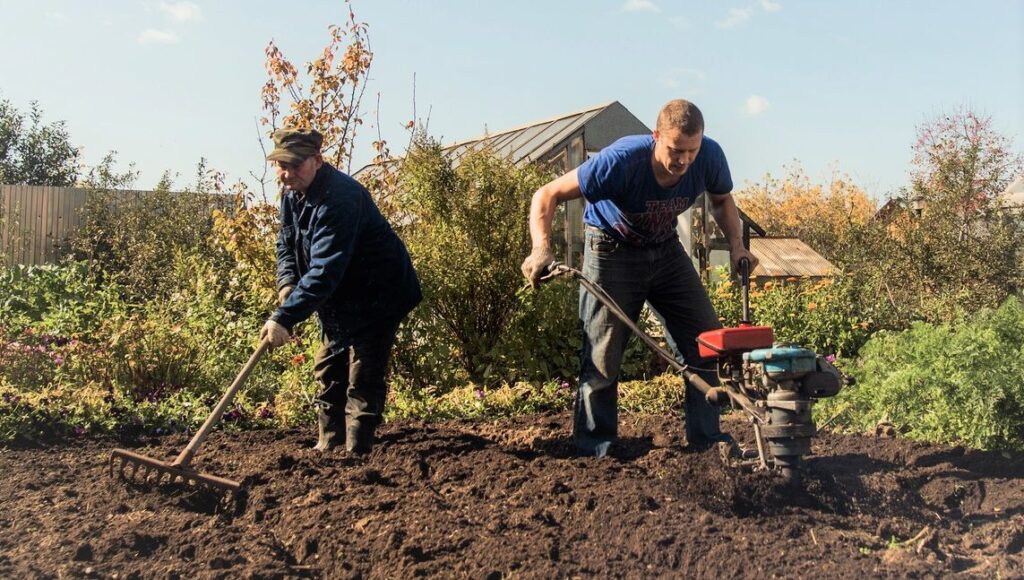Whether you plan to plant a lawn or start a vegetable garden, you need to work the soil before you start. This will loosen the soil and bring organic matter to the surface. This way, the roots will take more easily in the soil and your fruits and vegetables, your plants will develop better and more easily.
It is therefore important to turn over the soil in your garden in order to make the soil more fertile. This action must be done at least 2 weeks before the seeding period for a more flexible soil allowing the good development of roots.
Why Till your garden?
Tilling the top layer of the garden soil will soften it while bringing a new layer of nutrients to the surface where the seeds or plants will be placed.
During the process of tilling the garden, deeply buried weeds and invasive roots are chopped up, as are the remains of harvested crops. The leftover natural material can now break down much faster to help improve the quality of the garden soil.
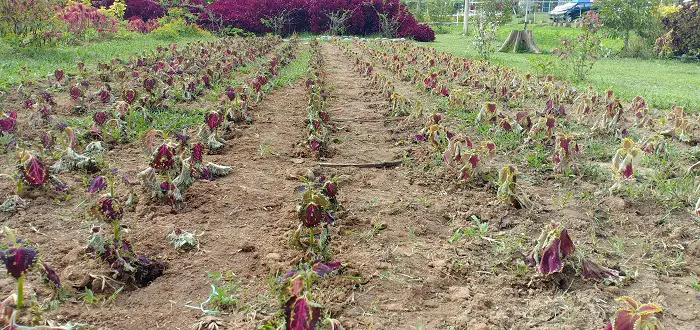
Crop residues, especially organic matter from legumes, inject highly beneficial nitrogen into the garden soil. Plants left in the garden after harvest begin to decompose and dry out to enrich the soil.
Tilling the garden will not only rid it of weeds, but also insects. The larvae laid by destructive post-harvest insects are lurking just below the soil and are just waiting for an opportunity to emerge to start nibbling on your growing plants. The larvae will not be able to withstand a frost or, in some cases, even low temperatures in the early evening of spring.
The only downside to exposing insect larvae in the garden when Tilling is the loss of beneficial insects, such as nematodes, that will help repel bad pests throughout the growing season. To help them thrive, feel free to plant flowers or any other plant outside the vegetable garden to help them thrive.
Once the garden is completely tilled with a spade or grelinette, take the time to break up the clumps of soil with a shovel or rake. Then lay down a layer of straw to improve the aeration process that occurs when the soil is turned. It also helps to keep the soil moist so it doesn’t harden back up and to nourish it.
Contents
When to Till your garden?
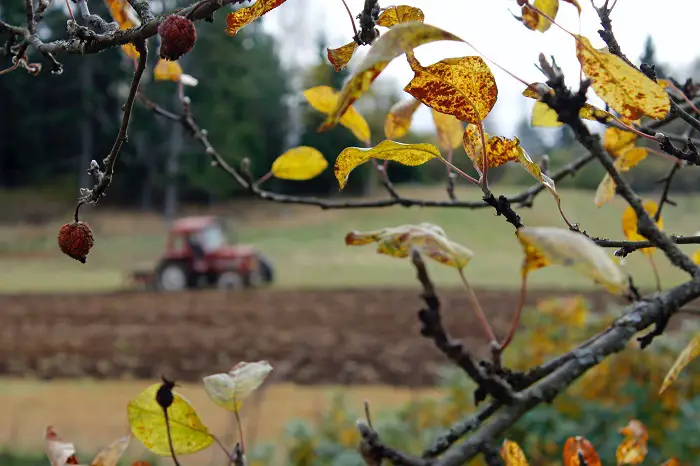
Rest assured, there is no one time to till your garden. You have two options: early fall or early spring.
Tilling in early fall
It’s best to till your garden when it’s not soggy. It will need to be slightly damp to make it easier for you, especially if you are doing it by hand. Tilling a few weeks after harvest allows crop debris to break down, and young weeds begin to grow in the void left by the harvested plants.
At the same time, wait until nighttime temperatures are low enough to kill insect larvae in the soil by exposing them to cold. To get the most out of fall tillage, incorporate compost as you process, and let it decompose naturally in the garden soil until spring.
Spring Tillage
Spring tilling can be done as soon as the soil is soft enough to be tilled, after winter temperatures have begun to give way to thawed soil.
Some gardeners till as early as possible to expose insect larvae to cold temperatures, about a month before planting to loosen the soil and kill weeds. Other gardeners think that tilling twice in the spring, but this can overwork the soil and potentially do more harm than good to the garden.
Since a spring tillage will be done shortly before planting, any compost added to the crop plot should already be processed and considered a quality potting soil.
Pay attention to soil texture
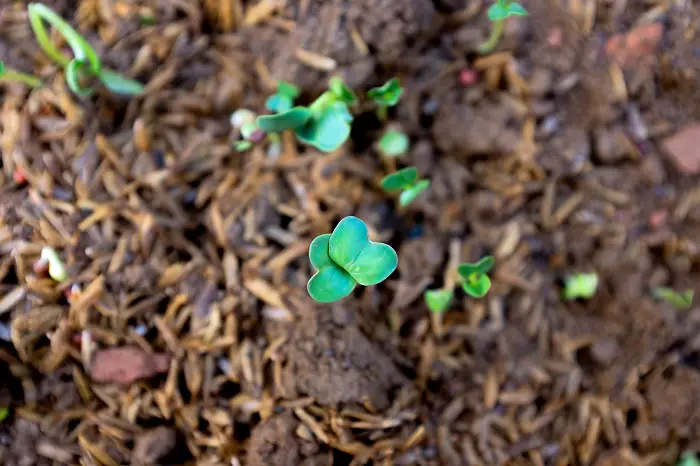
The best time to till a garden is when the soil is wet, but not soggy. If you try to till in wet or muddy soil, you risk compacting the soil by walking on it instead of turning and aerating it. Plus, you’ll be getting tired for no good reason.
Tilling the soil when it’s dry pushes what little moist soil exists further into the soil, and away from where you’re going to put the seeds or plants. Using a grelinette in dry soil will also make the nutrient-rich topsoil even more susceptible to being blown away by even light winds.
How do I Till my garden?
Plan ahead for the time of year you want to till so that you have compost, manure and mulch on hand to enrich the crop plot. Carefully inspect the crop plot to be tilled, to remove any debris and large stones that may not make the job easier or even break your tools. Next, choose the direction to till and keep it the same for the entire plot. Reducing the number of turns will make the work less strenuous and avoid stepping on the already tilled plot.
What tools should I use to till my garden?
Depending on the size of your garden, you may not use the same tools. These tips apply especially to large and small gardens.
1- The Spade
The spade is certainly one of the most common gardening tools you will use. It is perfect for digging small holes, tamping or breaking up clods of earth. It will also allow you to dig deep enough holes to plant bulbs for example.
Some people, however, prefer to use smaller shovels or spades for these tasks. It’s a matter of personal preference, but also of area. The spade will be ideal if you have a small area to till.
2- The Grelinette
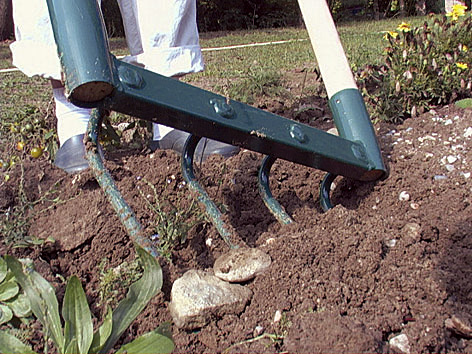
I already told you about it a few days ago, the grelinette is a tool that allows you to turn over the soil using your body weight. It can have 3, 4 or 5 teeth and will allow you to till a larger surface without hurting your back. This way, you will be able to easily turn over the soil. If the soil is too dry, be sure to break up the remaining clumps with a shovel or spade.
3- The Pitch fork

The gardening fork will be used to aerate the soil in your gardens. You need to be able to turn it over and mix the soil with organic matter to enrich it. The simple act of turning it over with your gardening fork will help transform the soil into something more viable for growing plants.
Using this tool is very simple, as you just need to rake it over the top of the soil. It is recommended for use on sandy soil that is considered soft. The grip remains comfortable, so you should not have any problems when using this tool for long periods of time.
4- The Trowell
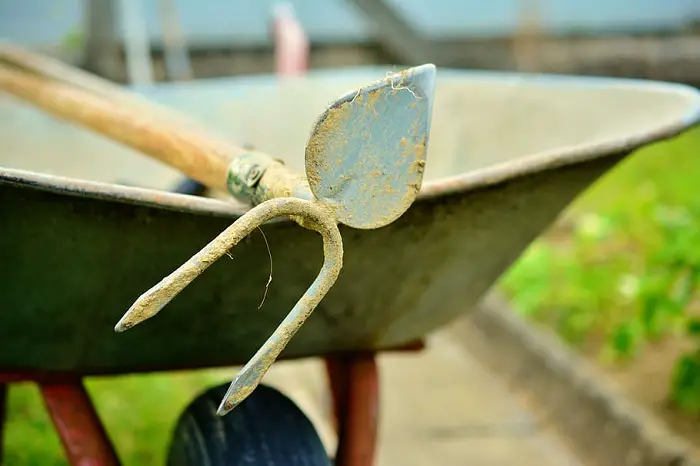
Very similar to a spade, the trowel also has a two-pronged fork to easily turn the soil and uproot weeds. If you need to pull up weeds, the trowel will be a very handy tool to have on hand. It can also be used to help you dig in the ground and plant seeds, so it’s a really versatile tool.
It will be ideal for people with hard soil. They can be quite cumbersome to use and it takes a lot of energy to swing them. Nonetheless, it is a tool that will allow you to easily weed hard-to-reach places: between hedges or vegetable patches for example.
5- The Hoe
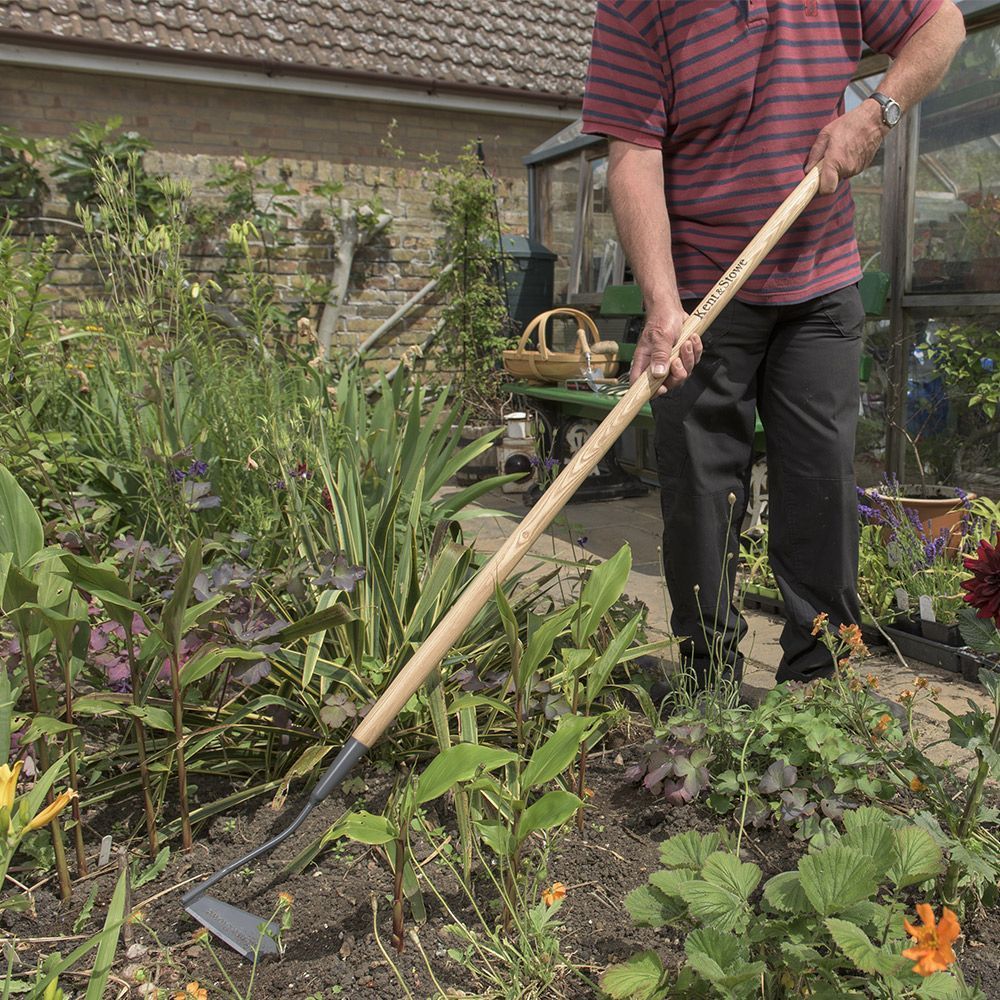
The hoe is a versatile tool that is a must for gardening. It will allow you to perform many tasks in your garden. It will be useful for tilling the soil, removing weeds and harvesting certain crops. However, it will not be ideal for people with a medium to large garden.
6- The Shovel

The traditional shovel is used for digging in the ground. Most shovels of this type have a sharp blade that makes it easy to dig in hard soil. You can step on the blade to push the shovel into the ground, allowing you to dig deeper.

